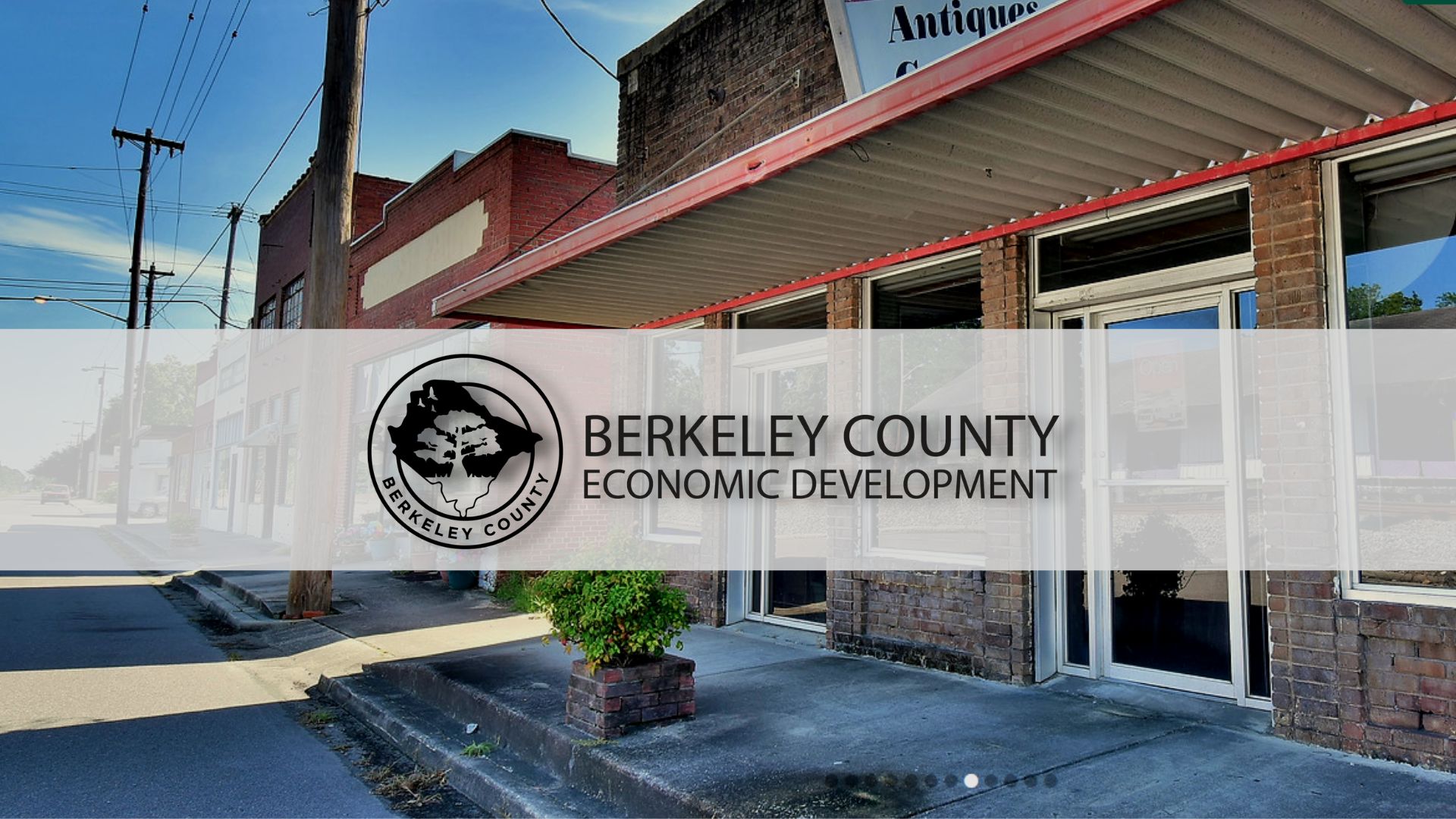BERKELEY COUNTY BROWNFIELD PROGRAM

About Grant
MONCKS CORNER, S.C. – (Tuesday, October 1, 2024) – Berkeley County is pursuing an Environmental Protection Agency (EPA) Brownfields Cleanup Grant for the former St. Stephen High School property that closed to the public in 1996 and is located at 1266 Russellville Road in St. Stephen.
The County plans to submit an EPA Brownfields Cleanup Grant Application in November 2024 to apply for funding to remove hazardous materials and/or petroleum products identified at the property. Prior to submitting the grant, the County is encouraging community members to review and comment on the draft application which includes draft Analysis of Brownfield Cleanup Alternatives (ABCA) online at https://berkeleymeansbusiness.com/brownfield/ beginning October 15, 2024, for public review and comment. <Read More>
Timeline


Community Site Application
This form is for community members who would like to recommend a property for evaluation under the Berkeley County Brownfields Assessment Grant. Completing this form helps the County collect the information needed to identify and prioritize sites for environmental assessment. If you are aware of a brownfield property located within the census tract boundaries shown above, please include the address or a detailed property description on this form.
Property Owners Site Application
This form is for property owners interested in having their property evaluated under the Berkeley County Brownfields Assessment Grant. Completing this form will help the County gather the necessary information to identify and prioritize sites for environmental assessment.
Additional Information
- Brownfields Steering Committee
- Community Update
- Community Meetings
- EPA Resources
- In The News
- Press Releases
- Events in Photos
- Brownfield FAQ
- More FAQ
Brownfield Steering Committee
Ex Officio
Henry Griffin
Benjamin Smith
John Clarke
James Gethers
Margaret Darby McGill
Andrea Hoffman
Michele Stosick
Nathaniel Nelson
Patricia Simon
Susan Perkins
Charon Gadsden
Gerald Addison
Appointed in EPA Grant Narrative
Dan Kredensor
Small Town Restoration
Janice Carr
St. Stephen Growth & Development
Sonya Addison-Stewart
Berkeley County School District
St. Stephen Town Council
Berkeley County Economic Development
Community Update
(As of December 2024)
EPA Brownfield Assessment Grant
What Phase Are We In?
- Currently, we are in the assessment and reuse planning phases.
- The Assessment Phase includes identifying and performing environmental assessments on multiple properties in the community and producing data that can lead to redevelopment of properties.
- The Redevelopment and Reuse Planning Phase includes taking proactive steps to effectively prepare for future use of the property through visualization and additional assessment.
- Cleanup Grant and Assessment Grant applications have been submitted with the goal of continuing further assessment in the future and beginning cleanup activities.
What Progress Has Been Made So Far?
- Five community meetings and steering committee meetings have taken place over the lifetime of the grant.
- In our last community meeting, attendees brainstormed how renovations to St. Stephen High School could best serve the community’s needs in the following areas:
- Education and job training
- Community resources
- Recreational activities
- Event space
- Health services
- Walkable greenspace
- Five Phase I Environmental Site Assessment (ESA) Reports have been completed for the former St. Stephen High School (2 assessments), Turner Mill Site, Former Rail Depot, and 1158 S. Main Street.
- A Phase II Site Assessment has been performed at the former St. Stephen High School and Phase II Site Assessment sampling has been completed at the Turner Mill Site.
- Additional assessments have been performed at the former St. Stephen High School, including:
- Asbestos and lead paint inspection
- Mercury sampling
- Initial structural assessment
Why Is This Grant Important to Me?
- Environmental Site Assessments (ESAs) can determine if your property may have any potential environmental concerns. The EPA’s grant program will provide funding to perform these assessments at your property.
- Two additional grant applications have been submitted. If awarded, they will continue to benefit the community through property assessments and making significant progress towards the goal of redeveloping the former St. Stephen High School.
How Can I Get Involved?
- The community can get involved by suggesting properties that may be assessed for redevelopment through our website.
- Ideal properties are those that may be abandoned for many years and/or may contain environmental hazards. (Examples: former gas stations, automobile repair facilities, former industrial sites, and/or former dry cleaners.)
- Share updates with family and neighbors to make sure they are aware of what’s happening with the project.
- Invite a project representative to your community event to answer questions or share updates.
- Keep a lookout for our next community meeting in late Spring/early Summer 2025, when we will share updates on any newly awarded grants.
Contact:
Corey McClary, Workforce Development Manager
Berkeley County Economic Development
📞 843-719-4096 | ✉️ vog.csytnuocyelekreb@yralccm.yeroc
For More Information:
🌐 Visit: berkeleymeansbusiness.com/brownfield
👍 Follow us on Facebook: Berkeley County Government

No meetings scheduled at this time
Past Meetings
October 2024
The community met Oct. 24 at St. Stephen Middle School to hear updates on the Brownfield Program
June 2024
10/29/24 – Berkeley Co. officials urging public comment for revitalizing St. Stephen areas
10/01/24 – Berkeley County could restore former St. Stephen school through Brownfields Grant | WCBD News 2
05/28/24 – St. Stephen Brownfield community meeting – Who’s On The Move
10/30/23 – The phases of revitalization in Berkeley County | News | postandcourier.com
04/11/23 – Brownfield grant could help revitalize some Berkeley County communities | WCBD News 2 (counton2.com)
10/26/22 – St. Stephen looking forward to community input on EPA revitalization grant (live5news.com)
09/22/22 – Berkeley County Receives $500K Grant To Revitalize St. Stephen Area | The Berkeley Observer
09/15/22 – St. Stephen area receives revitalization funds | News | postandcourier.com
09/15/22 – Berkeley Co. accepts $500K grant for potential redevelopment in St. Stephen (live5news.com)
April 2025 – Catfish Festival
Berkeley County Economic Development, along with Brownfield Grant Program partners The Asiko Group and Terracon, setup a booth in early April for the St. Stephen Catfish Festival. The team answered any citizen questions about the grant program and its progression.



What are Brownfields?
Brownfields are properties that are or may be contaminated with hazardous substances, pollutants, petroleum or other contaminants that pose a barrier to productive reuse. Brownfields often are in struggling neighborhoods and areas with blight, deteriorated infrastructure, or other challenges. Brownfields may include public or private properties, green spaces, or parks in need of preservation.
Benefits of Assessment
Brownfield properties can have either real or perceived contamination, and some may need remediation due to the presence of a contaminant. The positive impact of brownfield grant funding for a community, of any size, can be significant. By taking unused or blighted properties and transforming them into new business opportunities, housing, or recreational areas, communities become renewed.
Why Create a Brownfield Program?
Revitalizing brownfields provides new economic and social benefits to communities, in addition to improving environmental conditions. Reusing stagnant brownfield sites requires special attention. In communities with weak economic or market conditions, socioeconomic barriers, or other challenges, brownfields can remain idle for years. Still, a local community can take several actions even at the most challenging sites to best position brownfields for successful reuse.











































